Jewish, Christian and Islamic Origins Archive
Below you will find a description of our previous PhD research that took place.
Enoch and the angels: Scriptural Interpretation and Mythical Traditions in the Book of the Watchers (1 Enoch 1-36)
Subject of my research project is the Book of the Watchers (1 Enoch 1-36) in its different versions (Aramaic, Greek, Old Ethiopic) and in particular the relationship between Scriptural interpretation and mythical traditions in this work. The project will focus especially on those chapters of the Book of the Watchers in which the phenomenon of “changes of spheres” is typically described. One focus will therefore be on chapters 14-16. These chapters are part of the first vision of Enoch and include basically a heavenly throne room vision and an exhortation to the Watchers. Another focus will be on chapter 22, which describes how Enoch gets to know the realm of the dead during his cosmic journeys and, related to this, the different opportunities of human fate after death. Both mentioned parts of the Book of the Watchers depend to some extent on a biblical Vorlage, i.e. on literary works that were regarded as authoritative and are thus quoted, reformulated or interpreted. At the same time, both parts present a series of mythical traditions that can only remotely be correlated with the biblical text. Accordingly my research project takes the tradition-historical question for one of its main starting points and will investigate the Book of the Watchers regarding the origin of the material on three levels: the biblical Vorlage, the extra-biblical Jewish or non-Jewish (i.e. ancient Near Eastern and Greek) traditions, and the creativity and contemporary historical context of the author. Finally it is the aim of the project – especially in regard to the field of Hebrew Bible studies, but also in comparative regard – to clarify the relationship between tradition-history, literary- and textual-history of the Book of the Watchers and to arrive at a better understanding of the origin and impact of Jewish apocalypticism.
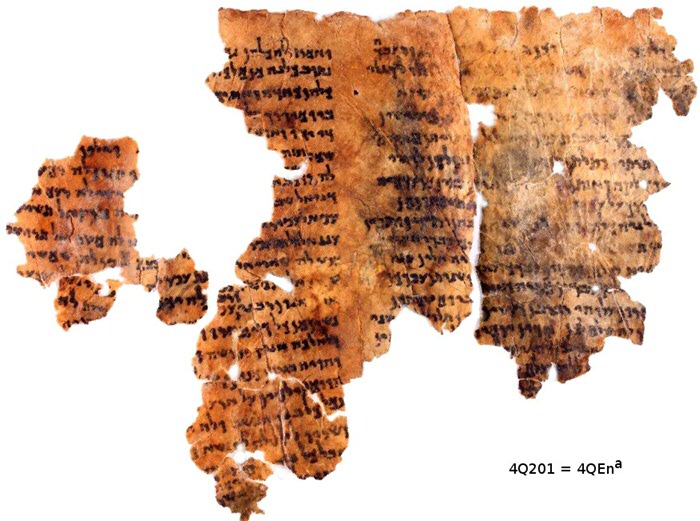
Character Formation in Josephus’ Judaean War
Flavius Josephus (AD 37‒ca. 100) is by far the most prolific surviving historical writer from the first century AD. His Judaean War, considered to be Josephus’ most important work by many, takes its readers to the heart of the Jewish revolt of 66‒74 AD. Judaean War describes the events leading up to the revolt, the revolt itself, and its aftermath. Despite several clashes between the Judaeans and the Romans, both parties are busier with internal conflicts: both Judaea and Rome were torn apart by civil war (stasis). Despite their heroic defense, however, the Judaeans are eventually beaten by the Romans, with as collateral damage the destruction of Jerusalem and its Temple.
A fundamental problem for Josephus was how to persuade the Graeco-Roman audience he aimed for. He was a Judaean, a people not particularly popular in his days. He had even fought against the Romans as general in the Judaean army. The only luck he had was ending up as protégé of the newborn Flavian imperial dynasty. Nevertheless, Josephus’ problem was that of most ancient historians, though perhaps slightly more pressing: how to convince an audience of their credibility in general and specifically regarding their field of expertise? This could only be reached by proper imitation (mimesis) which means that through their language and analyses historians were expected to imitate the nature of things, reality. The historian’s choice of words should suit the subject matter.
For the historian it was crucial that his descriptions matched the expectations of his audience. Events were usually seen in relation to others, forming chains of events. These chains were usually explainable through patterns of behavior and/or words of certain individuals or groups. And through patterns of behavior could be explained through their character. How a historian characterized individuals and groups in his history was of pivotal importance. A proper historical work should educate an audience by supplying them with accurate examples of behavior that could be applied in situations perceived as similar to past ones. What is more, characters featuring in ancient histories were usually employed as rhetorical devices supporting the main arguments and themes of the composition.
The aim of this project is to determine patterns of characterization in Judaean War and their impact for understanding the historiographical composition as a whole. This aim will be realized through the following key-objectives:
-
To identify patterns related to the use of characterization in Josephus’ War.
-
To correlate these patterns with larger trends in Graeco-Roman historiographical traditions and explain these patterns through this tradition.
-
To re-examine existing views on the aims and themes of War.
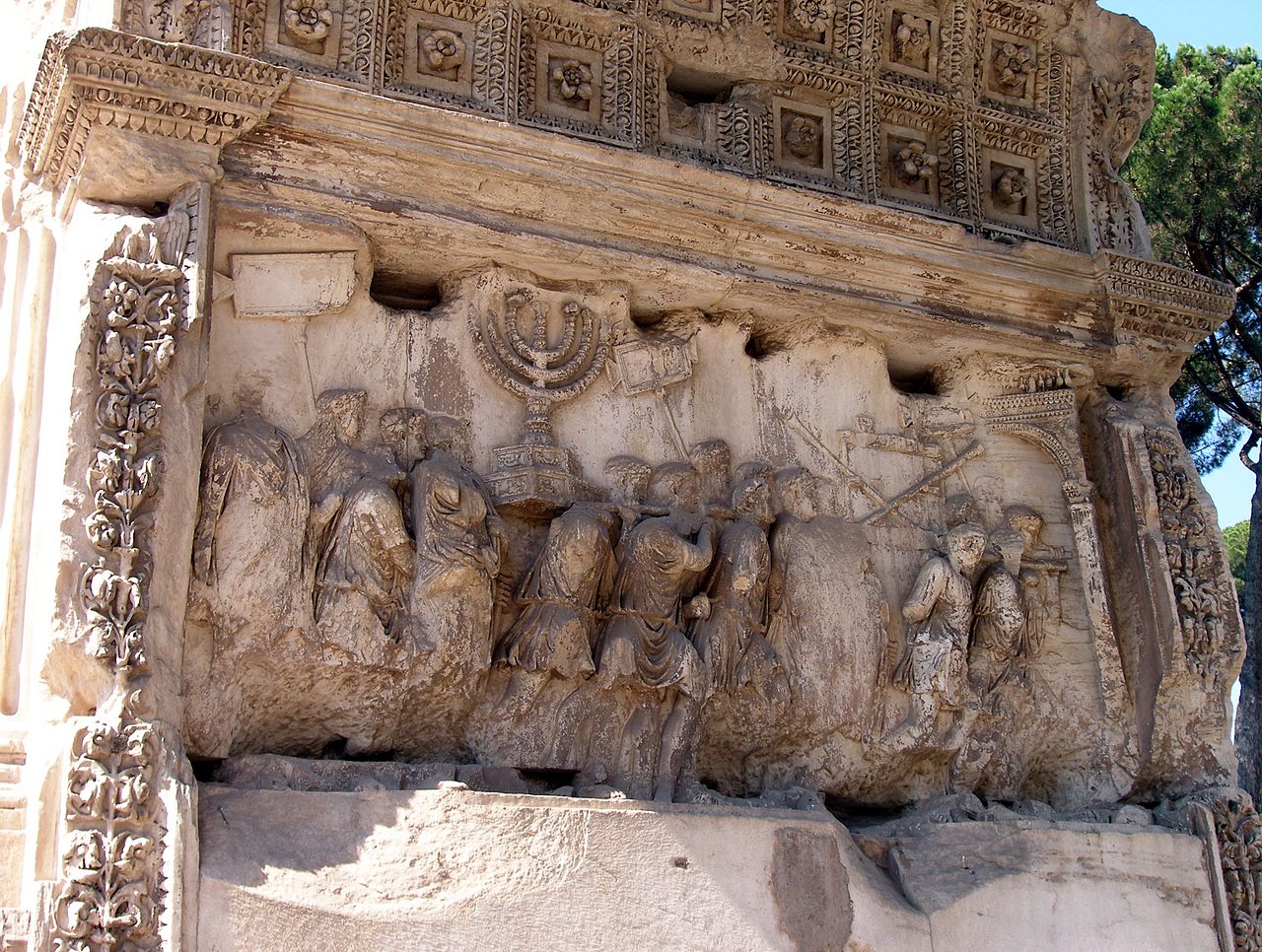
The cacophony of ‘Empty Talk’ (κενοφωνία) and ‘Newspeak’ (καινοφωνία)
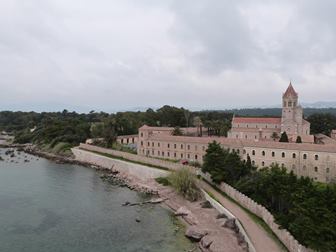
Vincent of Lérins, his views on the tradition and exegesis of 1 Timothy 6:20, in his role as a Gallo-Roman aristocratic cleric
Vincent (c. 380-450 AD), who lived on the southern Gallic island of Lérins in the first half of the fifth century, is still somewhat famous today for his adage he wrote at the beginning of his Commonitorium ("Memory Aid"), and which reads as follows: Likewise in the Catholic Church in particular all possible care must be taken that we hold that faith which has been believed everywhere, always, and by all.
In addition to Vincent's adage, scholarly literature focuses on two other aspects in particular, namely a) Vincent's relationship to Augustine and b) his view of the Trinity and, within it, Christology. The former aspect has in fact been the subject of debate since the seventeenth century, when it was argued that Vincent, with his view of the doctrine of grace, turned against Augustine and should therefore be called a "semi-pelagian" (so G.J. Vossius). Although this view of Vincent is less and less adhered to today, some nevertheless still relate him to the so-called anachronistic "semi-pelagianism”. The second aspect, Vincent's view of the Trinity, on the other hand, is quite rightly receiving increasing attention today. After all, he devoted a substantial part of his Commonitorium and, in fact, his entire Excerpta to describing the dogma of the Trinity and to opposing Nestorius bishop at Constantinople (428-431).
Against the background of these current theological discussions, Vincent's adage is also easier to understand. Because the aspects already mentioned, Vincent's adage, relationship to Augustine, and view of the Trinity, are interrelated, I approach Vincent and his writings in a new way in this book. I am guided by the following questions: a) how exactly should we interpret Vincent's adage? b) what current problems did he himself face? c) what role did he see for the vision of the church fathers in discussions about the Trinity? These questions will be addressed in chapters 1 and 2, where attention will also be paid to his biography.
In my effort to arrive at a more complete picture of Vincent I also take into account another, hitherto underexposed, aspect, namely his identity as a Roman which seems to be closely linked to his Gallo-aristocratic origins. I distinguish two mentalities in Vincent, namely a Christian and a traditional-Roman one. This aspect will be addressed in Chapter 3 as a necessary complement to the previously incomplete picture of Vincent. These two mentalities will then be related to his profound exegesis of 1 Timothy 6:20: depositum custodi devitans profanas vocum novitates (guard what has been deposited with you, while avoiding profane new assertions) which provides an outstanding example of the interaction between Vincent's Christian and Roman mentalities. His exegesis, directed against innovations, is in my view not in line with Paul's intention with this passage. Indeed, Paul applies it in an anti-sophistic discourse directed against empty talk (κενοφωνία, kenophōnia), as I will argue in Chapter 4. It is striking that the Greek term κενοφωνία in the available Latin manuscripts is almost without exception translated as vocum novitates, as if it said καινοφωνία (newspeak, kainophōnia). The differences between the Greek and Latin manuscript tradition and extra-Biblical writings are discussed in detail in Chapter 5. This "cacophony of κενοφωνία and καινοφωνία" affected Vincent's view of innovations. Therefore, in Chapter 6, I sketch an innovative picture of Vincent and argue that Vincent is more 'Roman' than he appears at first glance. I argue for a re-reading of his writings in which he is considered a Gallo-Roman aristocratic cleric. Vincent, with his sense of responsibility, helped the church take position in discussions about the Trinity and Christology, and therefore I consider him one of the great figures of fifth-century Western church history.
From the Nile to the Rivers of Babylon: A comparative study of the marriage contracts from the Jewish family archives found at Elephantine
This thesis is concerned with studying the marriage contracts from the Jewish family archives found at Elephantine in Ancient Egypt. It will combine various approaches as presented in the studies by other scholars, reviewing and expanding our knowledge about how the Elephantine Jews performed their marriages to ultimately discover how they constructed a Jewish identity for themselves.
Although the marriage contracts found at Elephantine contain valuable information about the Jews at Elephantine and Judaism at Elephantine in general, they have not yet received the attention they deserve in recent scholarship. The military colony itself consisted of many different cultures, making it a melting pot of different customs showing that the Persian Empire continued to bring different people from around the Ancient World into contact with one another and caused people from different cultures to reside alongside people from cultures other than their own.
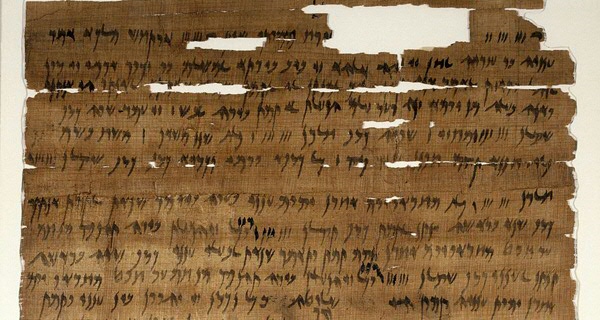
The documents from Elephantine can give us first-hand insight into how the different people functioned in this ever changing and turbulent world and how they formed or even changed their identities to fit this culturally diverse community. The materials found at Elephantine will be supplemented by similar and contemporary documents. These entail Demotic (marriage) contracts and Babylonian documents, written in the late Neo-Babylonian and Persian periods. Furthermore, documents found in the Murašu and Āl-Yahudu archives will be used to compare Jewish interaction in Egypt, with that of the Jews in Babylonia.
The Gnostic Myth in Hollywood (1990-2003): An Intertextual Approach
My doctoral dissertation will be devoted to the idea of the Gnostic myth in Hollywood. Taking into account recent developments in Gnostic studies, the theoretical part of the work will be centered around the works of Hans Jonas, Carl G. Jung, Eric Voegelin, and Philip K. Dick. A particular attention will be paid to the ways by which these authors pictured the relationship between Gnosticism and modernity.
Their ideas and theories will provide a conceptual framework for analyzing selected group of films that emerged between 1990 and 2003, e.g., “Jacob’s Ladder” (1990), “Dark City” (1998), “The Truman Show” (1998), or “The Matrix” trilogy (1999-2003). Firstly, this research will focus on disclosing intertextual relationships between cinematic narratives and the examined approaches to the Gnostic myth. Secondly, it will assess to what extent studying popular culture from intertextual perspective can contribute to the academic debate on the affinities between Gnosticism and modernity. The presented results will lead to a meta-analysis of the developed approach by delineating its limitations as well as explanatory merits.
Supervisor: Prof. dr. Lautaro Roig Lanzillotta
Defining Jewishness and Christian Identity in Claudian-Neronian Rome: Impacts of State Intervention
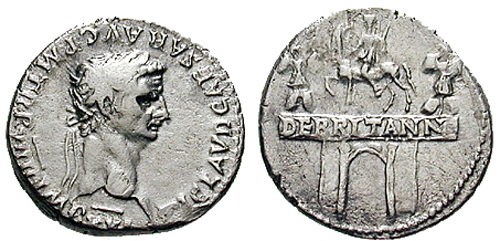
This project examines the role of the Roman state in Jewish and Christian self-definitions under Claudius and Nero. The effect of Rome's destruction of Jerusalem in 70 AD on Jewish self-definitions and on the ‘parting of the ways’ between Judaism and Christianity has been well researched. This project, however, explores the hypothesis that the Roman state had already been a determinative factor in the self-definitions of Jewish groups and in the emergence of a Christian identity at two earlier occasions: in 49 when Claudius banned the Jews from Rome and in 64 when Nero blamed a group described as Christians for the fire that destroyed Rome. It focuses on the exciting period before 70, when the category ‘Christian’ did not yet exist: both ethnically Jewish and non-Jewish, ‘gentile’ Christians somehow belonged to a variegated Judaism. Towards the end of this period, however, it was possible to identify the Christians in Rome as a separate group.
This research explores the role of the Roman state in this transition. Paul’s letter to the Roman Christians is used as a source of particular relevance by relating it to the historical context of its addressees in a situation of migration from and return to the centre of the Empire. In this way, a new perspective is gained on the letter to the Romans and on the position of Jews and Christians vis-à-vis the Roman state in the first century.
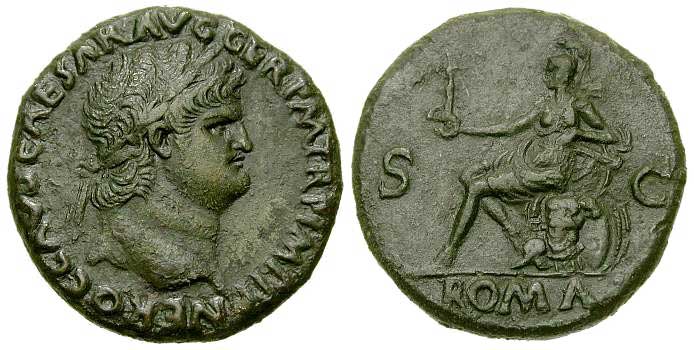
Critical Edition and Commentary of Plutarch’s Treatise De facie quae in orbe lunae apparet
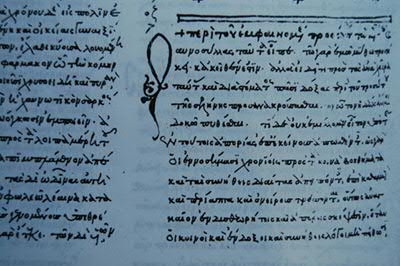
Supervisor: dr. L. Roig Lanzillotta
Plutarch’s treatise De facie quae in orbe lunae apparet has a long and rich textual transmission through the ages: ever since our oldest testimonies (two manuscripts from the 14th and 15th centuries) to the latest editions of the 20th century, many scholars have studied, translated, corrected and commented upon its text.
As far as the editions are concerned, the De facie already appears in Aldus Manutius’ (1449-1515) edition of Plutarch’s Moralia from 1509 and in other Renaissance editions, such as the one from 1599, with the Greek text established by (Henricus) Stephanus (1528-1598) and the Latin translation from (Wilhelm) Xylander (1532-1576). Among the modern editions we owe the most relevant ones to H. Cherniss (Loeb Classical Library) and M. Pohlenz (Teubner): if these excellent editions in general improve the text and Greek syntax, sometimes they go too far in altering the text.
Besides editions and translations, scholars have also focused on the conceptual analysis of Plutarch’s treatise. Up to present, however, no single scholar has attempted an integral approach to its various and complementary perspectives. In general, scholars tend to focus on a specific aspect, be it the scientific thought, be it the religious and philosophical aspects of the text.
My project therefore intends to provide a new critical edition of the Greek text of Plutarch’s De facie and to furnish it with a complete commentary of the treatise. I hope to achieve three main objectives :
1. To offer a new critical edition based on the collation of the two manuscripts and that corrects erroneous previous readings, discusses different proposals, conjectures and interpretations which, sometimes, unnecessarily modify the transmitted text.
2. To elaborate a study of the contents that determines both the position of this treatise in the ensemble of Plutarch’s work and in the cultural context of his time (1st-2nd centuries CE).
3. To provide three different commentaries devoted to different aspects of the treatise, namely scientific, religious-philosophical, and stylistic-literary. While the two former issues have been dealt with by previous scholarship, not so the latter aspect. I hope therefore to provide both an integral approach to Plutarch’s science and religious-philosophical background and a new perspective on the style and structure behind Plutarch’s work.
Theology and Jurisprudence: On the Convictions of Theologians and the Logical Sources of Islamic Legislation
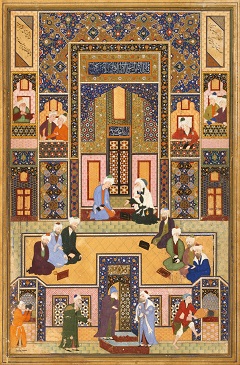
This PhD thesis investigates the relationship between Islamic law and theology. It explores the influence of the doctrines of Islamic theology (kalam) on the understanding and formulation of the science of the origins of Islamic jurisprudence (usul al-fiqh). Therefore, this thesis examines the impact of five theological doctrines – the Mo’tazely, the Asha’ry, the Matoridy, the Hanabaly and the Imami Shi’a – to comprehend the logical sources of Islamic legislation, according to five schools of jurisprudence: the Hanafy, the Maliky, the Shafiey, the Hanbaly, and the Ja’fry .
The logic of both jurisprudence and theology is that they are independent disciplines. However, by examining the history of Islamic scholarship, we can find various illustrations which prove that this is not accurate, and that the principles of Islamic theological doctrines had significant consequences on Islamic jurisprudence in general and the origins of Islamic jurisprudence specifically. T his thesis argues that the open and enlightened perception of God (theology) leads to a more adaptable and progressive understanding of His law (jurisprudence). Hence, the instant study seeks to answer the following query: How have the convictions of the scholars of Islamic theology influenced their theorizing of the logical sources of Islamic legislation?
Supervisor: Dr C.E. (Clare) Wilde
Prepositions of Movement in New Testament Greek. Essay of Semantic Analysis
The objective of this thesis is to provide a semantical analysis of the Greek prepositions of movement ἀπό, διά, εἰς, ἐκ and πρός in the New Testament. Based on the methodology applied by the Greek-Spanish Dictionary of the New Testament (DGENT) we also attemptto illuminate some NT passages in which the meaning of these prepositions has provoked disagreement among translators and exegetes . On the basis of this study we intend to show thatsemantics is the basis on which exegetical analysis must be based, in order to provide a rigorous interpretation of the texts.
-
Chapter I, "State of the issue," offers a critical analysis of the most outstanding contributions in relation to the study of the Greek preposition.
-
Chapter II, " Prepositions in Hellenistic Greek, " describes some of the major changes in the Greek prepositional system that took place in Hellenistic times. The Greek of the NT broadly reflects the transformations of the prepositional system in Hellenistic Greek. From this, we extract that, during this period of the Greek language, the notion indicated by the preposition is specified more by the context than by the case.
-
Chapter III, "Methodological issues," presents the methodology of semantic analysis followed for the study of ἀπό, διά, εἰς, ἐκ and πρός and compares it with contemporary lexicography. For the elaboration of its lemmas the DGENT applies a method of semantic analysis based on the following principles:
a) systematic distinction between meaning and translation in the drafting of entries;
b) creation of the definition of the lexical meaning of lexemes accompanied by the corresponding translation. Moreover, definitions and translations are also elaborated for different sememes or meanings of the lexeme in question;
c) elaboration of the semantic formula of the lexemes to identify which semantic species, both denoted and connoted, compose the morpholexeme (semic development);
d) explanation of the contextual factor(s) that provoke(s) the semantic change of the individual lexemes;
e) verification of all the contexts in which a lexeme appears within the NT's corpus. -
Chapters IV - VII are devoted to the semantic analysis of ἀπό, διά, εἰς, ἐκ and πρός. They show that the DGENT method allows us to specify and structure the different meanings of each preposition, discovering a nexus between its different meanings by means of analyzing their contextual factors.
It also helps us determine the notional scope of each morpholexeme in the selected NT passages, resolving interpretative disagreements about the meaning of the prepositions analyzed, shedding light on its interpretation, and highlighting that an adequate understanding of the meaning of prepositions in context is essential for exegesis.
Supervisor: Prof. dr. Lautaro Roig Lanzillotta
The Adverb in the New Testament. Classification From a New Semantic Point of View.
The theme of my investigation is semantics in the New Testament corpus. My dissertation is part of the larger framework of the research project DGENT “Diccionario Griego-Español del Nuevo Testamento / Greek-Spanish Dictionary of the New Testament”, conducted by GASCO (Group of Semantic Analysis of the University of Cordoba).
The focus of my study is the adverb in Hellenistic Greek, a subject that up to present has received little attention, since most of the studies focus on the morpholexeme in the Classical Greek period only.
In this PhD thesis I employ the methodology developed by Prof. Juan Mateos and Jesús Peláez, whose aim is the study of the vocabulary of the New Testament from a semantic point of view.
Based on a structural analysis, I study the adverb in general with a view to describing the different lemes in particular. This study allows us to distinguish various meanings and to shed light on some New Testament passages whose proper understanding have long been discussed.
Supervisor: Prof. dr. Lautaro Roig Lanzillotta
Paul among the Ancient Philosophers: Perspectives on Pistis

My research project concerns the use and meaning of πίστις (pistis, usually translated as 'faith', 'trust' or 'persuasion') in Paul's letters in light of contemporary philosophical sources.
The dichotomy of faith and reason: a post-enlightenment construct?
In our present culture, believing is often regarded as the opposite of knowing, just as faith is played off against science, by radical believers and disbelievers alike. It is seldom considered, however, if this dichotomy can be traced to the actual origins of Christianity. How rational did these ‘believers’ consider their new convictions to be? A related question concerns the private or public nature of faith: is the widely held view of faith as a personal commitment congruent with ancient conceptions? Was trust between humans in a society deemed similar to trust in God?
Pistis is a crucial, recurring element in the message of the biblical author Paul. Yet in order to communicate its meaning to his public, Paul had to use and connect to existing semantic notions. The question is whether these included more relational, cognitive or public aspects than the modern concept entails. Therefore my research will be aimed at mapping out ancient conceptualizations of pistis.
An approach from ancient philosophy

Over the past decade several studies have appeared arguing for a more contextual approach to Paul, considering both the Jewish and the Hellenistic aspects of his world and identity. As regards the Greco-Roman cultural setting, a diverse environment in itself, ancient philosophy is gaining ground as the best comparison for Pauline thinking. The early developments of Christian faith are understood in light of the ancient continuum between Hellenistic philosophical schools and religious traditions. Whereas ancient ‘religio’ concerned a more ritualistic and traditional public worship, philosophical movements were characterized by ethical deliberations, while still including aspects that would sound religious to modern ears, such as the devotion for a founding figure, the respect for ancient wisdom and the possibility of converting to a particular philosophy.
These findings call for more in-depth research regarding the use of concepts shared by New Testament writers and their contemporary philosophical writers. The reference material available to us from Hellenistic philosophers roughly contemporary to Paul, such as Plutarch and Epictetus, is as yet largely unexplored, but promising. Focussing on the use of pistis and related terms, this project intends to point out that the worlds and thought patterns of early Christianity and ancient philosophy intersected and interacted with each other.
A rise of interest in modern philosophy
Another development that was an incentive for this research project is the recent rise of philosophical interest in Paul and Pauline thinking on faith and reason (e.g. Nietzsche, Heidegger, Agamben, Badiou and Žižek). Together with members of the Philosophy Department of the Radboud University we work on an overarching project to evaluate this modern reception of Paul.
The First Jewish Revolt (66-70 CE): a socio-anthropological study into its causes
This project examines the outbreak of the Judean revolt against Rome in 66 CE, culminating in the destruction of the second temple of Jerusalem in 70 CE.
Applying particular sociological insights, its aim is to overcome a deadlock in current research, which relies on the prevalence of one-sided models and perspectives. As an alternative, more attention is paid to the correlation between cultural-ideological developments, socio-political dynamics and aspects of Roman imperial politics in Judea society, which all had a crucial role to play in the development towards a violent civil war, ethnic conflict and armed rebellion against Rome.
After a study of the texts of Flavius Josephus (37-ca. 100 CE) as the literary main source of the present research from a literary-rhetorical perspective, the project applies a contextual approach to Judean politics in general and the conflicts attested by Josephus in particular. More precisely, the study of Josephus’s history of The Judean War sets out to understand this text in terms of form, content, meaning and authorial intent by drawing from ancient texts and theories of Greco-Roman rhetoric and classical tragedy, as well as Judean apocalyptic texts. Subsequently, Josephus’s account will be confronted with other Second Temple Period texts that address aspects of Judean political thought and practices, as well as epigraphic, numismatic and archaeological material, to focus on the spatial, temporal and social dimensions of three central institutions in Judean politics; the ethnic metropolis of Jerusalem, Judean temple cult and Torah assemblies, in order to study the relation between the different actors involved and their various political strategies.
The Poetry of Magic: The Aramaic Incantation Bowls and the Late Antique Religious Imagination
The Aramaic Incantation Bowls are amuletic objects consisting of incantation texts written in several dialects of Aramaic (Jewish Babylonian Aramaic, Syriac, and Mandaic) on the inside of small earthenware bowls. They constitute a phenomenon limited in both place and time — to Sasanian Mesopotamia.
Besides a handful of scattered articles, there really exist only epigraphic and grammatical treatments of the incantation bowls. My Ph.D. project intends the first, large-scale synthetic treatment of these objects, and comprises a poetics of the Jewish Babylonian Aramaic (J.B.A.) bowl texts — an investigation into their poiesis or active making, their aesthetics and the principles of their composition, as well as an investigation into the relation that they instantiate between magic and rhetoric. My project will demonstrate that our understanding of these texts is greatly enhanced by their treatment with the tools of literary analysis. Their religious significance, for example, cannot be properly understood without paying due attention to their rhetorical and poetic structure. One of the most significant features of the bowls written in J.B.A. is their constant engagement with the Hebrew Bible, the rabbinic writings, and myths and stories derived from these sources. The manner in which they adopt and adapt these materials, as well as the figurative sensibility and sensitivity to image and metaphor that they display, requires both an acknowledgement of the metaphoric character of all representation and an approach that is appreciative of the poetic and creative aspects of magical and religious discourse.
The method I propose to deal with the bowls is drawn from the adjacent fields of cognitive poetics and cognitive rhetoric and is designed to test the hypothesis that the bowls function as magical vehicles for (popular) religious thought and that their texts reflect the ongoing construction of these beliefs.
The cosmic symbolism of the Temple of Jerusalem in Flavius Josephus
By carrying out research and analysis of surviving texts from the GraecoRoman period, we can observe that numerous sacred structures, either simple or highly complex in design, were erected and expanded in order to house deities. The distinguished presence of a celestial being among these peoples, and its dwelling in certain places, meant the access to countless societal blessings. On the whole, these sacred precincts were located in urban areas and for this reason they were regarded as an integral part of city`s organisation. The Temple of Jerusalem was one of these sacred structures, and in my thesis, I investigate the portrayals of this Temple in the works of Flavius Josephus, with a particular interest in cosmic aspects of Josephus’ language, in the context of ancient Graeco-Roman cosmology.
| Last modified: | 08 April 2024 12.10 p.m. |
